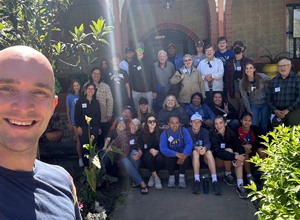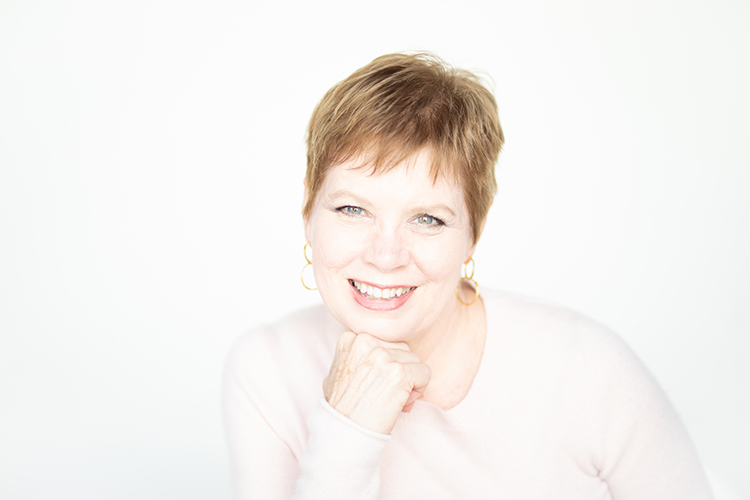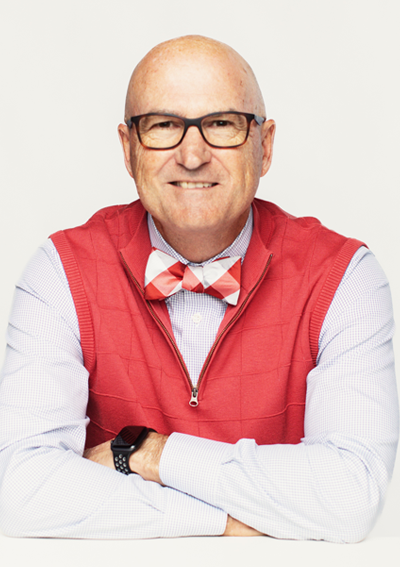Our shining creator, who protects, helps, and loves us. We see your vision for minga on earth as it is in heaven. Help us to have just what we need, and embrace us as we embrace our neighbors. Lead us into peace and security— for you connect us all in mercy and compassion. Amen.
The team who traveled to Ecuador last month for our High School Service-Learning Trip prayed this prayer every morning and evening. You may recognize it, or at least its structure. At the end of our first full day in Otavalo, the town in which we stayed for the week, the sixteen of us sat down in a circle and considered the Lord’s Prayer and how we might adapt it into our own language.
“Our Father, who art in heaven…” rings with hallowed memory for many of us. Sometimes, though, the words can jumble into jargon of which we forget the real meaning. Words like “art” and “thy” and “thou” are antiquated to our daily vocabulary, and even words like “debts” and “temptation” and “glory” take on a different shade of meaning in this prayer than they do in regular conversation. Together, we workshopped a new version of the prayer so that we could make the words our own as we repeated them each day.
Our mission in our trip to Ecuador was to partner with FEDICE, an organization committed to community development across rural and indigenous communities. With a small-but-mighty staff, they work to provide accessible loans, training, and other support for small businesses like daycare centers, eco-friendly resorts, and artisan businesses. FEDICE works with a wide network of leaders and resources to make their magic of mutual aid and support to meet needs and help folk flourish.
Blanca Puma, FEDICE’s Executive Director, organized a meaningful week of serving, learning, and exploring. In our primary project, we helped finish construction on a bathroom building for a daycare. We painted each inch of the small building, grouted the tile, and celebrated the finished project with a special party on our last day.
In-between our time at the Semillitas del Futuro (“Little Seeds of the Future”) daycare center, we did things like visit Totoro Wasi and Asosergons. Totora Wasi is a business that harvests a special type of reed native to the region (called totora) that they use to craft woven objects like bowls, hats, and rugs. Asosergons is an organization of women who cook for dozens of daycare and senior centers in the Otavalo region everyday. Both have received loans from FEDICE; they celebrate the support and how, in paying them back, they are able to pay the support forward.
We visited Plaza de Ponchos in Otavalo, South America’s largest indigenous market and a science museum located smack-dab in the middle of the Equator line. We even spent an afternoon on a boat ride around the lake in the middle of Otavalo. This three-story pontoon boat carried speakers that blasted music during our ride. The Semillitas daycare staff, FEDICE leaders, and all of us volunteers from the USA danced the entire time.
Two of the lines from that prayer we wrote wove throughout our week in Ecuador. We both proclaimed and experienced how God “connects us all.” Right after we wrote it on our group prayer worksheet, the room next door in the hotel started reverberating with people singing “We are one in the Spirit.”
We shared the week in Ecuador with another group: a handful of adults from their twenties to their seventies from Disciples of Christ churches across Oregon. They had scheduled a regional mission trip the same week we did, so we shared meals, service, and devotional moments— by the end of the week, we were connected. We were connected, too, to the other folk with whom we danced on that boat: the daycare teachers, the students they worked with, and neighbors who we met along the way. Together, we discovered more deeply how we fit into God’s wide world.
God’s “vision for minga” was also in plain view. On our first day, we learned that “ming” means “working together.” This mutuality of minga is the heartbeat of FEDICE. As they garner support from churches across the USA, they are intentional to keep support grounded in relationship so that it’s more than a transaction. Our team— together with our Disciples siblings from Oregon— gathered to build relationships so that our churches’ giving was more than one-sided. Yet, it didn’t become two-sided— but something more. In this minga, we both gave and received and experienced something that cannot be logged on a school’s service hour sheet— something more alive.
The world is indeed alive, which we saw in nature’s glory around Otavalo and in the power of the laughter and smiles shared with friends old and new. Creation shines with sacred life and love, and through the glimpse we got in another part of the world, we have been able to see more clearly God’s spirit alive here back home, where we continue to sense how we are all interconnected in mercy and compassion. Amen.




